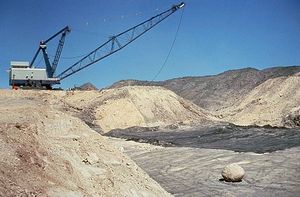Environmental Degradation
Description
The natural environment; including but not limited to soil, water, air, flora, and fauna, has a natural balance. Through pollution, over usage, and lack of stewardship, the balance is broken causing the natural networks that sustain life on this planet to suffer.
How it Works
Is humanity part of the environment or are we separate from it? The belief that the natural environment is something to be used and conquered is core to this pattern. This sort of Humanity Vs. Nature situation has led to the degradation of the delicate balance of natural systems that cannot be easily replenished. With a growing population the need for natural resources are rising, but in 1st world countries the amount of resources a single person can consume significantly outweighs the amount of resources a person living in the third world would.
However, this is only part of a larger problem.
When the depletion of resources cannot be replenished naturally we found ways to put a Band-Aid on the solution here and there. This has led to all sorts of problems including introducing chemical pesticides and fertilizers that allow us to create more food resources in the environment than can occur naturally. In the end, some of these end up further degrading the environment which leads to more Band-Aids.
As long as humanity-at-large sees itself as separate from the natural environment this degradation will likely continue.
Evidence
“Conservation is getting nowhere because it is incompatible with our Abrahamic concept of land. We abuse land because we regard it as a commodity belonging to us. When we see land as a community to which we belong, we may begin to use it with love and respect.”
- Aldo Leopold
A study from the University of Oregon found that in certain zones, areas that were clear cut had nearly three times the amount of erosion due to slides. When the roads required by the clearcutting were factored in, the increase in slide activity appeared to be about 5 times greater compared to nearby forested areas. The roads built for clearcutting interrupt normal surface drainage because the roads are not as permeable as the normal ground cover. The roads also change subsurface water movement due to the redistribution of soil and rock.
Links
References
Swanson, F.J.; Dyrness, C.T. (1975). "Impact of clear-cutting and road construction on soil erosion by landslides in the western Cascade Range, Oregon". Geology (Geological Society of America) 3 (7): 393–396.

